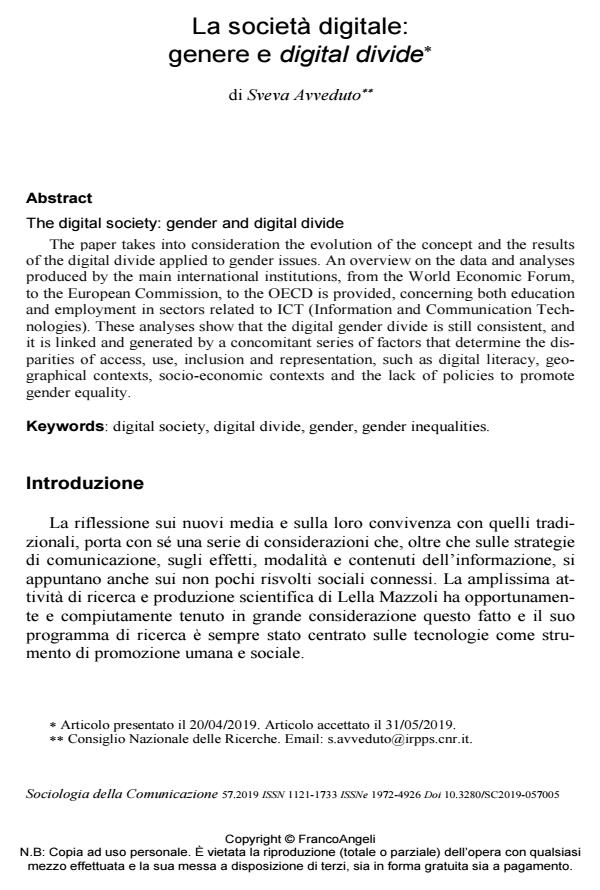The digital society: gender and digital divide
Journal title SOCIOLOGIA DELLA COMUNICAZIONE
Author/s Sveva Avveduto
Publishing Year 2019 Issue 2019/57
Language Italian Pages 19 P. 65-83 File size 626 KB
DOI 10.3280/SC2019-057005
DOI is like a bar code for intellectual property: to have more infomation
click here
Below, you can see the article first page
If you want to buy this article in PDF format, you can do it, following the instructions to buy download credits

FrancoAngeli is member of Publishers International Linking Association, Inc (PILA), a not-for-profit association which run the CrossRef service enabling links to and from online scholarly content.
The paper takes into consideration the evolution of the concept and the results of the digital divide applied to gender issues. An overview on the data and anal-yses produced by the main international institutions, from the World Economic Forum, to the European Commission, to the OECD is provided, concerning both education and employment in sectors related to ICT (Information and Communi-cation Technologies). These analyses show that the digital gender divide is still consistent, and it is linked and generated by a concomitant series of factors that determine the disparities of access, use, inclusion and representation, such as digi-tal literacy, geographical contexts, socio-economic contexts and the lack of poli-cies to promote gender equality.
Keywords: Digital society, digital divide, gender, gender inequalities.
- Digital divide, e-government and trust in public service: The key role of education Diego Mesa, in Frontiers in Sociology 1140416/2023
DOI: 10.3389/fsoc.2023.1140416
Sveva Avveduto, La società digitale: genere e digital divide in "SOCIOLOGIA DELLA COMUNICAZIONE " 57/2019, pp 65-83, DOI: 10.3280/SC2019-057005